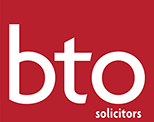27 March 2020
Last week, Chancellor Rishi Shunak announced a financial support regime which would allow eligible employers to reclaim up to £2,500 per month for staff who would otherwise have been laid off or made redundant due to the economic effects of COVID-19.
We discussed this in our blog on 24 March: COVID-19 and employment law: 24 March 2020 - What do we know so far?
Many questions remained unanswered but, last night, the Government issued updated guidance on how the scheme will work. The key points to note are:
|
|
- The scheme is open to all UK employers that held a PAYE scheme on 28 February 2020
- To be eligible, the employee must have been on the payroll as at 28 February; and employees made redundant after 28 February can be re-hired and furloughed
- Any organisation with employees can apply (including charities and public authorities) however the government does not expect public sector employers to use it if they continue to receive wage costs from central government in the normal way
- Employers will be able to claim 80% of furloughed employees’ wages up to £2,500 per month plus the associated Employer National Insurance contributions and minimum automatic enrolment contributions. Fees, commission and bonuses are not included
- Employers may “top-up” this payment to full salary but are not obliged to do so
- Employees who are furloughed cannot work; but can are able to undertake training and do volunteer work
- Employers do not need to place all of their employees on furlough; however normal equality and discrimination laws apply in the normal way and employers should be mindful of that in their decision relating to process, including deciding who to offer furlough to
- Furlough leave must be taken in blocks of three weeks (there is nothing in the guidance as of yet which prohibits rotating furlough leave amongst employees, provided each employee is off for a period of at least three weeks)
- Employers can only claim for reimbursement once every three weeks (i.e. they cannot claim a weekly reimbursement)
- Employees on sick leave or self-isolating should continue to get sick pay but can be furloughed after this
- Employees who are shielding in line with public health guidance (i.e. those in the vulnerable categories) can be placed on furlough
- Employees on maternity (or similar leave e.g. paternity leave or shared parental leave) can continue to draw their statutory payments. The guidance does not prohibit people on such leave (e.g. women on maternity leave) from agreeing to return to work early and then be furloughed. Employers will need to consider whether there is financial benefit of such an arrangement. If employers offer enhanced (earnings related) contractual pay to women on maternity leave, this is included as wages costs that can be claimed through the scheme
- The Government expects the scheme to be up and running by the end of April and will set out the mechanics of how claims can be made in due course
- Employers need to designate the affected employees as “furloughed” and notify them of that change. The guidance states that normal employment law principles still apply, so staff should be asked to agree to the furlough arrangements. They are likely to do so if the alternative is redundancy or lay off without pay. Employers need to write to employees confirming they have been furloughed and keep a copy of that communication to be eligible for the scheme.
The full guidance can be viewed here and we would encourage all employers to read this:
Claim for wage costs through the Coronavirus Job Retention Scheme
The spread of COVID-19 continues to create unprecedented challenges for the UK workforce and businesses must keep updated and make use of this Government support where they can. Our Specialist Employment Team can assist you with all employment law aspects of the furlough scheme. Please get in touch if you have any queries.
Contact:
Caroline Carr, Partner: cac@bto.co.uk / 0141 221 8012



